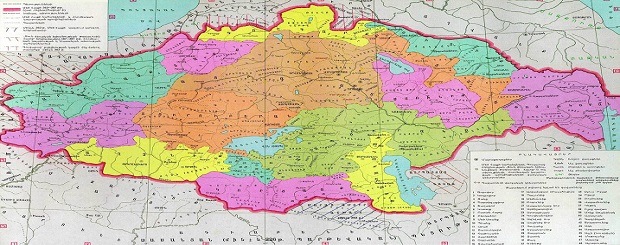
Highlights – We analyzed 52 full mitochondrial genomes from ancient humans in the South Caucasus
17 AUGUST 2023 – DNA
Highlights
•We analyzed 52 full mitochondrial genomes from ancient humans in the South Caucasus
•The results show a high level of maternal genetic continuity in this region
•Cultural shifts across eight millennia have not changed the maternal gene pool
Summary
The South Caucasus, situated between the Black and Caspian Seas, geographically links Europe with the Near East and has served as a crossroad for human migrations for many millennia [1, 2, 3, 4, 5, 6, 7]. Despite a vast archaeological record showing distinct cultural turnovers, the demographic events that shaped the human populations of this region is not known [8, 9]. To shed light on the maternal genetic history of the region, we analyzed the complete mitochondrial genomes of 52 ancient skeletons from present-day Armenia and Artsakh spanning 7,800 years and combined this dataset with 206 mitochondrial genomes of modern Armenians. We also included previously published data of seven neighboring populations (n = 482). Coalescence-based analyses suggest that the population size in this region rapidly increased after the Last Glacial Maximum ca. 18 kya. We find that the lowest genetic distance in this dataset is between modern Armenians and the ancient individuals, as also reflected in both network analyses and discriminant analysis of principal components. We used approximate Bayesian computation to test five different demographic scenarios explaining the formation of the modern Armenian gene pool. Despite well documented cultural shifts in the South Caucasus across this time period, our results strongly favor a genetic continuity model in the maternal gene pool. This has implications for interpreting prehistoric migration dynamics and cultural shifts in this part of the world.
Keywords
ancient DNA
mtDNA
mitogenomes
South Caucasus
Armenia
genetic continuity
population genetics
Results and Discussion
In this study, we present 206 mitochondrial genome sequences from three sub-populations of modern Armenians and 44 (plus eight previously published) mtDNA genomes from ancient individuals excavated in Armenia and Artsakh (Figure 1; Table S1). The calibrated radiocarbon dates of the ancient samples ranged between 300 and 7,811 years BP, with the majority being Bronze Age individuals, 3,000 to 4,000 years old (Table S1).

www.cell.com/current-biology/fulltext/S0960-9822(17)30695-4?fbclid
